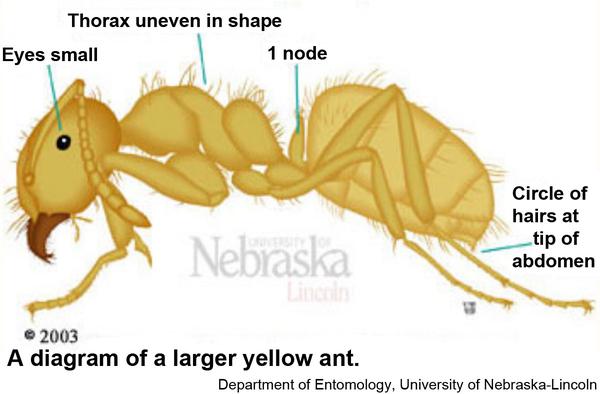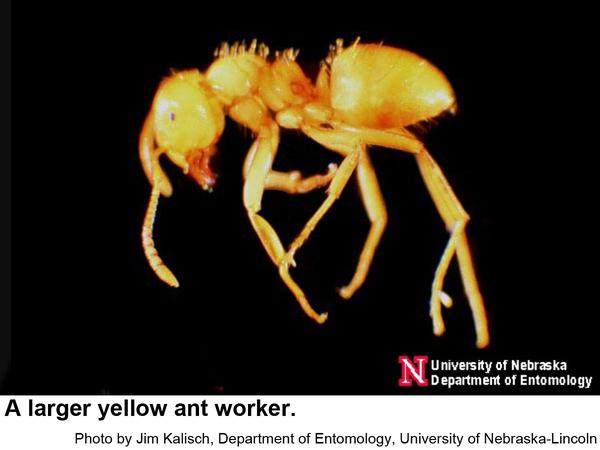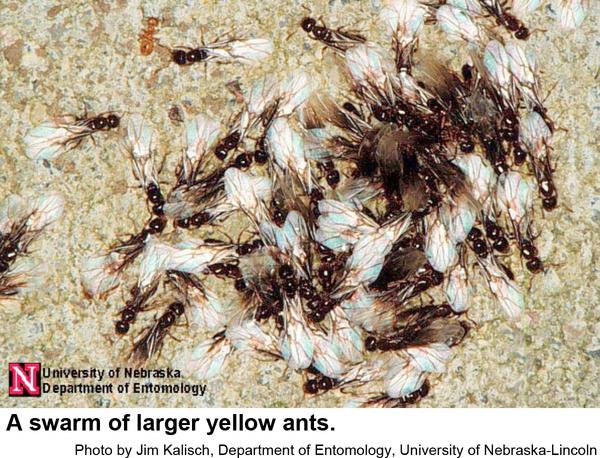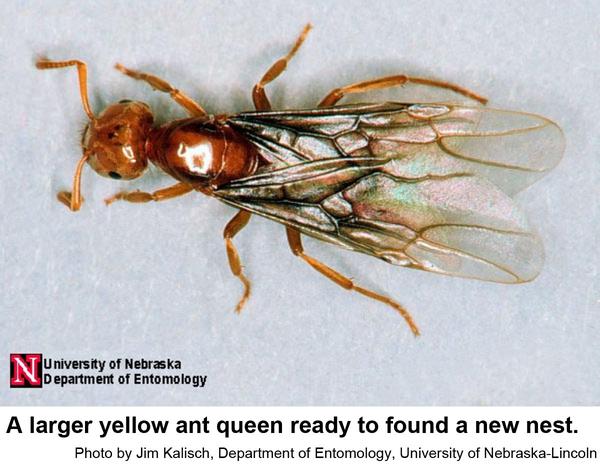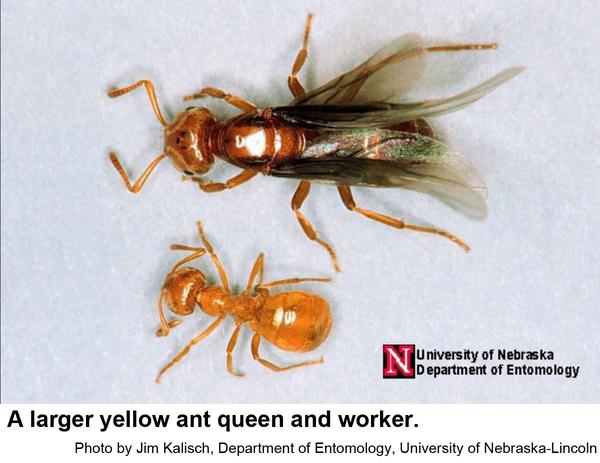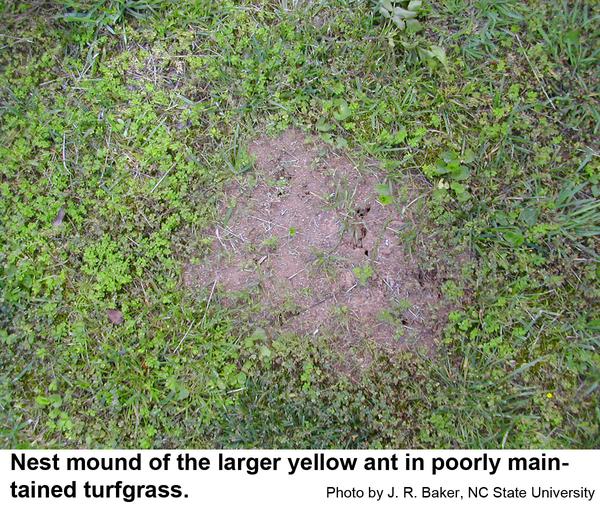Description and Biology
Larger yellow ants, Acanthomyops interjectus, are about 1/4 inch long (workers) and are yellow to yellow-orange. Queens are 3/8 inch long and are darker brown. Before founding a nest, queens have wings and resemble small wasps. Once in the new nest, queens shed their wings and begin to rear workers. The larger yellow ant is interesting because it secretes citronella when crushed or disturbed. Perhaps not noticeable with only one ant, but when a nest is disturbed, the odor of citronella may be noticable. Although the larger yellow ant does not sting, it does use formic acid for defense against other insects. Apparently the citronella helps the formic acid penetrate through the integument of the offending insect with which the ant is contending. These ants nest in open areas and form large mounds in soil, under logs, rocks, patio blocks, porches, and concrete patios. They often mound up large amounts of soil as they excavate their galleries. Larger yellow ants swarm most of the year although winged forms usually occur in in the fall or winter, and they usually swarm at night. Swarming may even occur inside buildings when colonies are located next to or under the structure! Winter is the normal time for new colonies to be founded.
Habits
Larger Yellow ants feed primarily upon honeydew excreted by aphids and mealybugs that feed on roots as well as other hapless insects they overcome. They even transport aphids and mealybugs to new plants as previous plants dieback and not longer produce sap. Larger yellow ants are primarily nocturnal and are usually not seen during the day. When encountered, workers are swift, agile, and timid. They retreat into the nest readily.
Residential Recommendations
Control of larger yellow ants is not critical, since they cause little damage other than the annoyance of the appearance of their nest mounds in the landscape or their rare presence indoors. If the colony is in the landscape, drench the colony with diluted insecticide, labeled for this purpose. Baits are not effective for this species. Ants found indoors can be vacuumed or swept up and discarded.
Other Resources
- Larger Yellow Ant. Anonymous. 2020 (copyright). Horticulture and Home pest news. Iowa State University Extension and Outreach.
- The Sweet Smell of Ants - Citronella or Large Yellow Ants, Acanthomops interjectus. Raupp, M. J. 2013. Bug of the Week, University of Maryland Extension.
- Extension Plant Pathology Publications and Factsheets
- Horticultural Science Publications
- North Carolina Agricultural Chemicals Manual
For assistance with a specific problem, contact your local N.C. Cooperative Extension Center.
This Factsheet has not been peer reviewed.
Publication date: May 13, 2020
Reviewed/Revised: March 7, 2025
Recommendations for the use of agricultural chemicals are included in this publication as a convenience to the reader. The use of brand names and any mention or listing of commercial products or services in this publication does not imply endorsement by NC State University or N.C. A&T State University nor discrimination against similar products or services not mentioned. Individuals who use agricultural chemicals are responsible for ensuring that the intended use complies with current regulations and conforms to the product label. Be sure to obtain current information about usage regulations and examine a current product label before applying any chemical. For assistance, contact your local N.C. Cooperative Extension county center.
N.C. Cooperative Extension prohibits discrimination and harassment regardless of age, color, disability, family and marital status, gender identity, national origin, political beliefs, race, religion, sex (including pregnancy), sexual orientation and veteran status.

